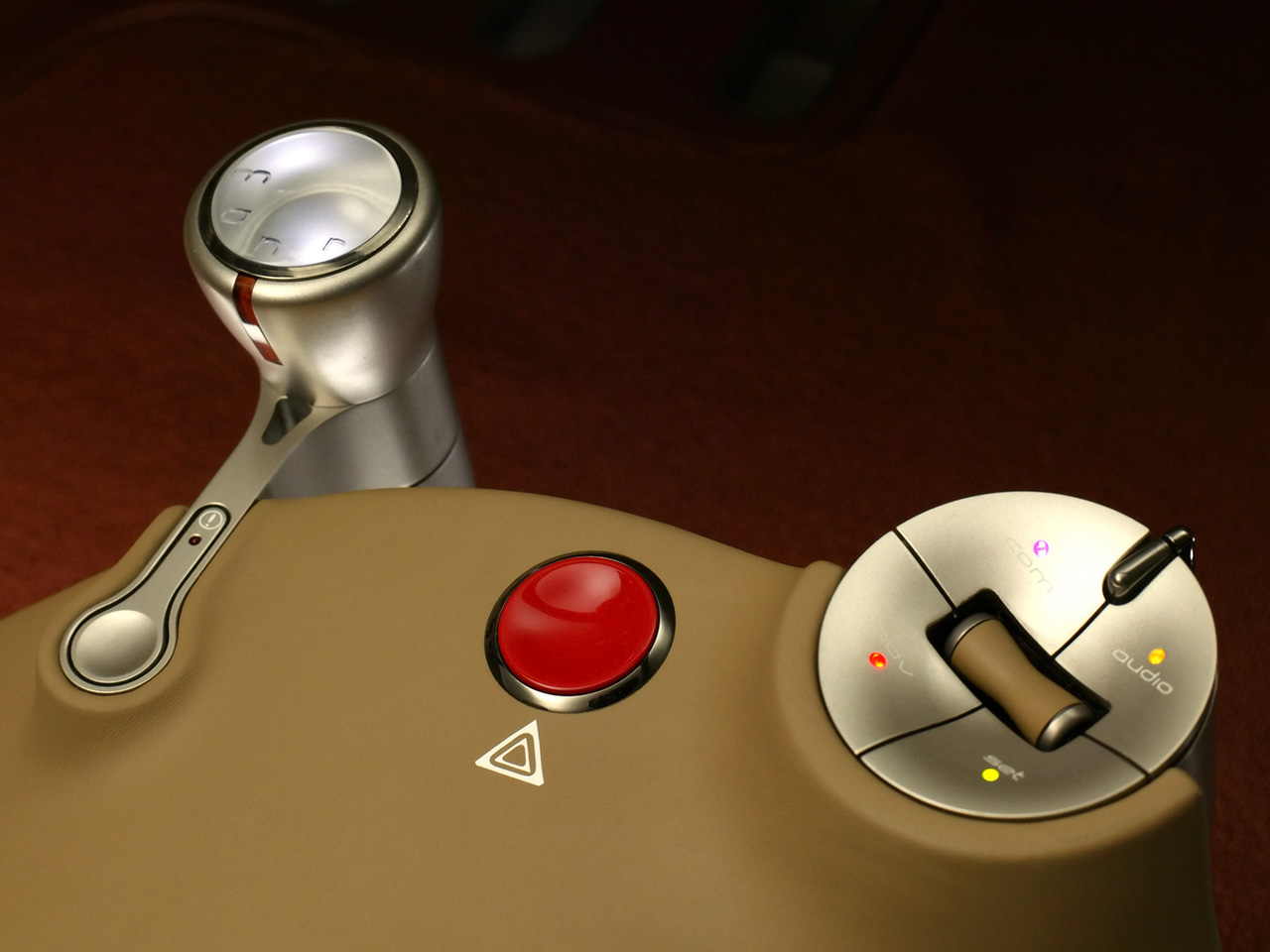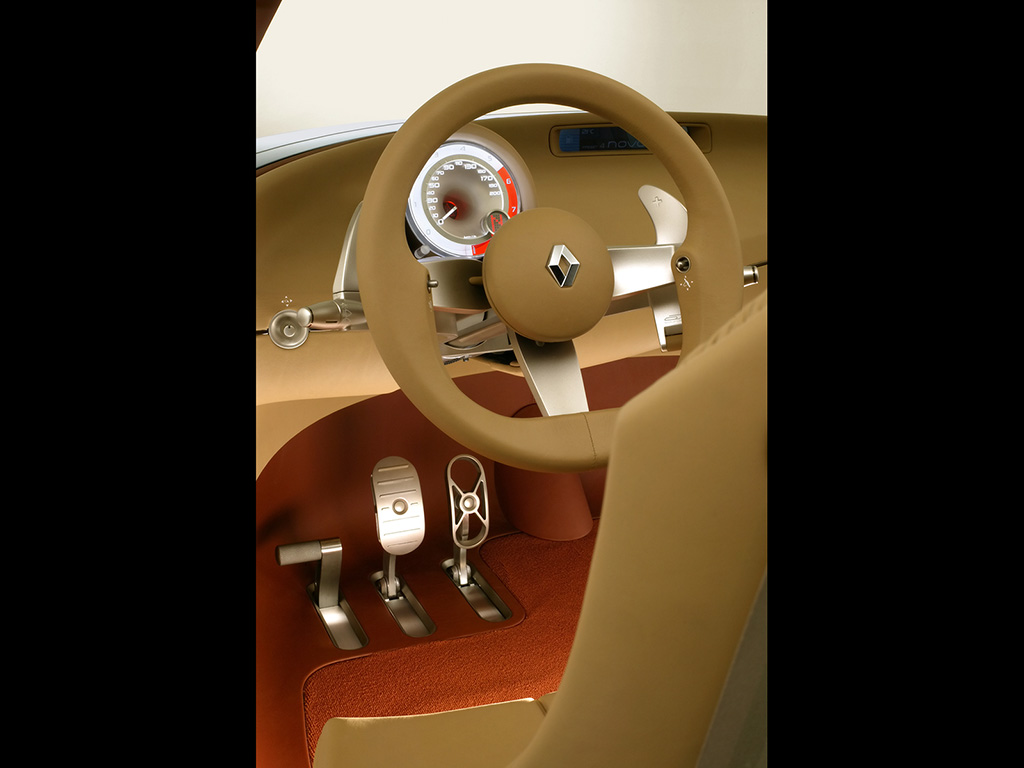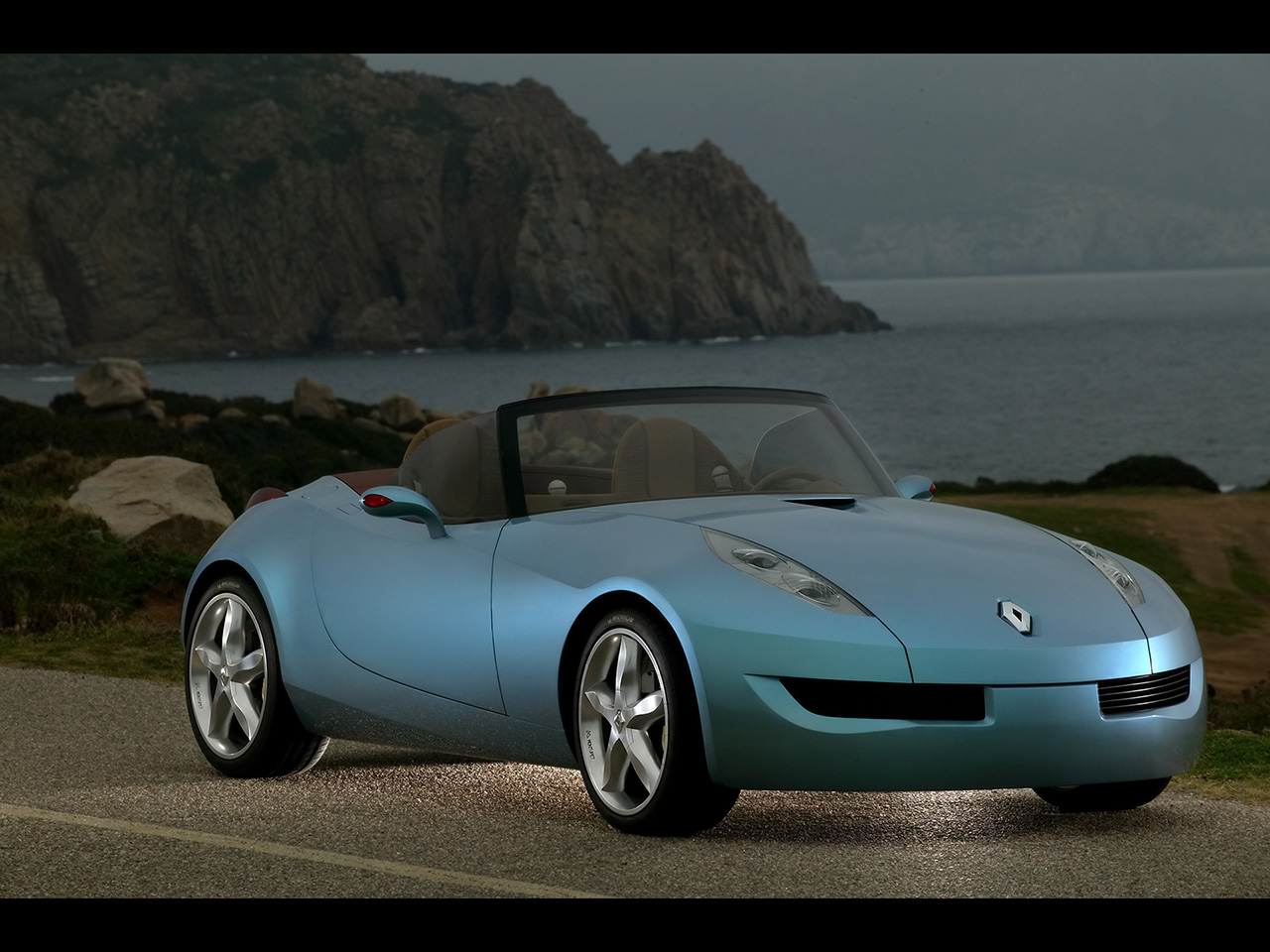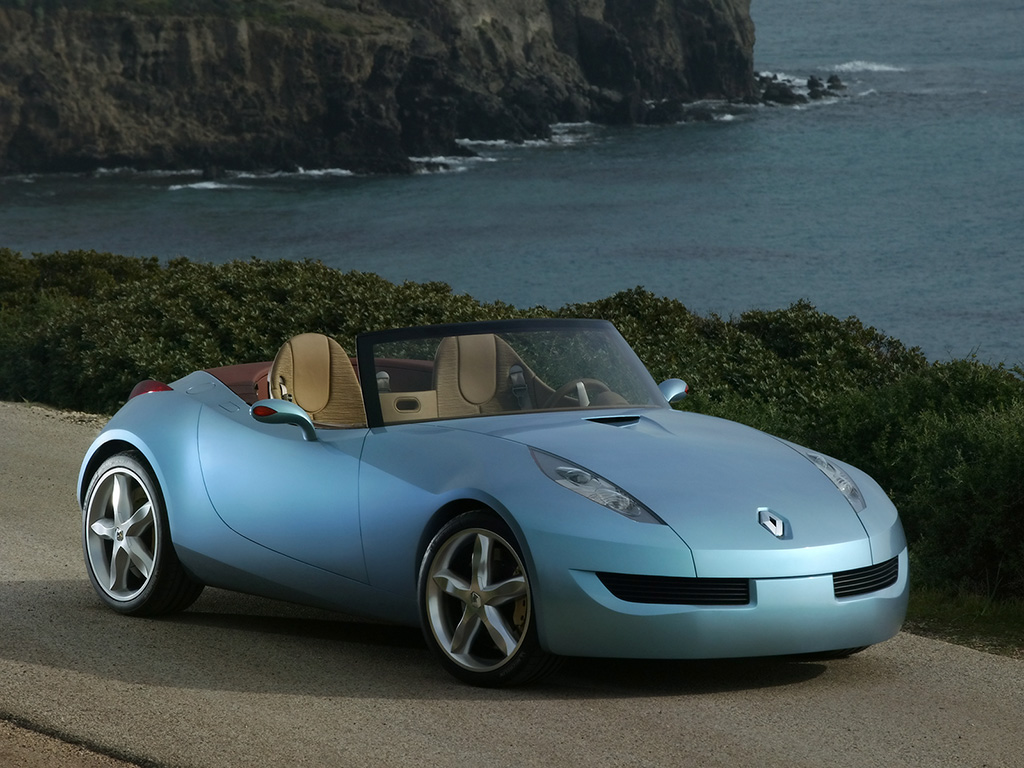2004 Renault Wind Concept
|
Price |
-- |
Production |
-- | ||
|
Engine |
2 liter 4 cylinder |
Weight |
1874 lbs | ||
|
Aspiration |
naturally aspirated |
Torque |
141 lb-ft | ||
|
HP |
136 hp |
HP/Weight |
13.8 lbs per hp | ||
|
HP/Liter |
68 hp per liter |
1/4 mile |
-- | ||
|
0-62 mph |
-- |
Top Speed |
-- |
(from Renault Press
Release) This 2+1 roadster with a streamlined design and
lively performance combines both flowing and structured lines. The
interior is elegant in accordance with the “Touch
Design” concept, boasting a cabin that seems to be cloaked in
leather. The controls put the emphasis on ergonomics and simplicity.
At first glance, Wind’s sweeping lines suggest charm and sensuality.
Its contours determine the design, giving the car a racy, dynamic
look.
Undeniable charm and lively performance
“The exterior combines the sensuality of flowing lines with the dynamism of chamfered contours. The interior is reminiscent of a well-fitting glove. The result is a breath of fresh air in the world of roadsters,” says Patrick le Quément, Renault’s Senior Vice President, Corporate Design.
Wind’s profile gives an
impression of simplicity and consistency. It is made up of two
defining lines. The first runs along the side of the car, curving
into the front and rear wings and sweeping round the wheel arches.
The second line, even more apparent, envelops the cabin and
underscores the impression of protectiveness. The powerful headlamps
also contribute to Wind’s appeal. They extend along the bonnet,
highlighting the car’s dynamism with a streamlined, elongated shape.
Despite their simple looks, the headlamps conceal complex
technology. A powerful jet of blue-tinted light flows through a long
transparent tube stretching across vertical glass covers.
The almond-shaped rear lamps continue the body silhouette with their sharp edge. Two powerful LEDs light up parallel glass covers, creating striking beams of light to the sides and rear.
The arc of the panoramic windscreen extends around the sides of the car with a curve that incorporates the side windows. The cabin can be covered with a triple-thickness fabric roof including a rounded rear glass window.
The colour of Wind's bodywork is Aquamarine.
A simple, elegant and secure interior
The cabin is moulded around the driver and passengers. A large sheet of Sienna-coloured leather forms an enveloping cocoon. The pleated leather seats, Tobacco in colour, are elegant and comfortable. They are fixed, in tune with the “roadster” spirit, while the steering wheel and pedal assembly are adjustable and fold away automatically when the door is opened for easier access. Two folding leather-covered rollhoops form an extension of the rigid structure to which they are fitted.
Wind is a 2+1 roadster. The central section linking the backs of the two front seats is made of carbon fibre covered in foam and leather. It can be unhooked and turned inside out, forming a saddle shape that provides a third seat in the rear of the car.
Despite its compact size
(3.87 metres long), Wind is extremely roomy. The boot, lined with
embossed
leather, offers substantial luggage space (232 litres).
Simple, sophisticated controls
All the vehicle’s
controls feature an anodized aluminium finish for a muted look. In
accordance with the
“Touch Design” concept developed by Renault over the past three
years, they put the emphasis on
ergonomics, simplicity and clarity. A circular, centrally mounted
control panel provides access to each set of functions for
communications, music, navigation and services by means of a button
in the middle of the circle. Data is displayed on a screen at the
top of the dashboard.
The gearbox mode selector is also in the centre of the dashboard and is designed to be ergonomic. Gear shifting takes place using a paddle on the steering wheel.
The design of the speedometer-cum-revcounter dial is both simple and sophisticated. With an anodized aluminium surround, it is cut into a glass cylinder. Data is displayed in both analogue (a needle indicating speed) and digital form. Patches of blue followed by red move around the cylinder as the engine speed increases.
In the left-hand door of
the vehicle, a push-button cylinder incorporating the air
conditioning controls
swings out towards the driver to display the temperature in the
cabin.
The Wind roadster is fitted with a 136 bhp 2.0 16V engine.



